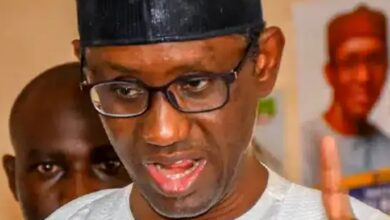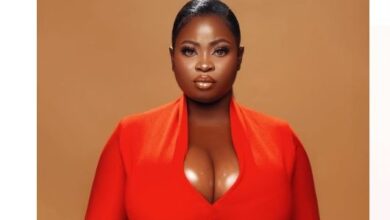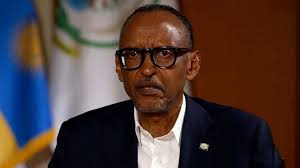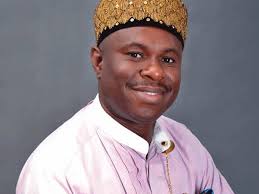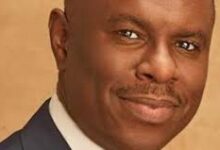I import all materials for my artwork– Sculptor

A ceramic sculptor, Adegoke Olubusi, in this interview with OLUFEMI ADEDIRAN speaks about how his journey into the world of creativity was significantly shaped by his royal lineage. He also shares the challenges Nigerian artists face and offers insights into how these challenges can be addressed
Can you describe your journey into art? I am from a royal family in Igede Ekiti. I have always been an artist, but I stopped completely at some point and went straight into business. I became deeply involved in various ventures like selling solar products, running a restaurant, and other businesses. However, sculpture was something I never did back then, as I had always been a painter. Everything we did in those days was manual—graphics, ceramics, and even textiles—there were no computers then.
I attended Federal Government College, Sokoto, before proceeding to Ibadan Polytechnic. In my first year of college, I won the Junior National Art Competition, and after leaving Sokoto, I went to the Federal School of Art and Science in Ondo. Art is a blessing, a gift from God. When I stopped, I didn’t think much about it anymore. But something strange happened in 2018—I lost my sight. I was taken to the hospital and was diagnosed with diabetes. I could barely see, so I travelled abroad for medical treatment.
Towards the end of September that year, I told my daughter that I was bored because I wasn’t used to sitting idle. I asked her to take me to the nearest school. On my first day there, I was sitting in one of the studios, and something told me to sculpt myself. I thought, ‘How can I sculpt myself when I can’t even see properly?’ But the thought persisted. Then, an elderly studio attendant came over and told me not to just sit but to make a sculpture of myself, as if she was reading my mind. She brought me clay, and that moment changed my life completely. From then on, I realised that whenever I create sculptures, it feels like the Holy Spirit is ministering to me. I understood that there’s nothing a man of God can do without the God of man, and without God, we are powerless.
During the course, we held several exhibitions, and lecturers from other universities saw my works and loved them.
You are from a royal family. How did your family accept your decision to become an artist?
I was never ashamed of pursuing art, nor was I pressured by my family to quit. As I said, art is a blessing—it comes naturally to me, as God has given me this gift. Drawing is second nature to me; I sketch at any given opportunity, even in my dreams. I don’t see why parents should discourage their children from pursuing art, especially as artists are among the wealthiest people today, with their works being sold for millions of dollars. Yes, I was encouraged to do other things, but my mother always insisted that I be allowed to follow my dreams. I initially wanted to study architecture and gained admission to Obafemi Awolowo University, but by the time it was processed, they told me the architecture course was full. I tried other schools, including the University of Ibadan, but there was no space. Eventually, I went to Ibadan Polytechnic, where I was offered admission to study Art, graduating with a distinction. Everything just felt natural, as though God was guiding my steps.
Were you the first in your family to venture into art?
Yes, I’m the firstborn, and I’m also the first artist in the family. I specialise in portrait ceramic sculpture.
What is your creative process like?
Most of the work I do now is commissioned—clients ask me to create sculptures for them. Inspiration comes naturally. You don’t overthink it; when it comes, you just get on with it. I made a sculpture of former President Olusegun Obasanjo, and he was amazed when he saw it. It’s even more fulfilling when people appreciate what you create, especially because these pieces are not cheap. I just wish our government would offer more support to artists. When I was in the United Kingdom, I was given so many opportunities, including an office to work in, and they didn’t want me to leave. But there’s no place like home, and once you reach a certain age, especially around 40, you start feeling the need to return. I came back to Nigeria in 2007, and in 2018, God called me back into the art world. Since then, I’ve never looked back, and I have no regrets.
Art cannot be copied; it is like an open heaven for everyone. Each person’s journey is different. If God calls you to a particular path, you must follow it and not try to imitate others, as everyone’s journey is unique. We create through inspiration, often inspired by other artists.
How was the period when you weren’t creating art?
Those times were really tough. I went through some of the hardest moments of my life during that period. Even though I had a good job, things just didn’t go well. You can make all the money and still not have peace—it was like peace was missing from my life. But I can tell you that, for a long time now, I’ve finally found peace.
Would you say that art restored your sight?
Yes, but it was God who restored my sight through art. God gave me back my vision, although without my glasses, everything is still blurry.
How would you describe the art industry in Nigeria?
We are doing well, but we can definitely do better. Nigerian artists are among the best in the world, especially when you consider that sculpting actually started here. It was discovered here, though history credits the Greeks, which is false. This type of art originated from Africa, and that’s why they refuse to let Nigeria take back the sculpture of the Ooni of Ife from their galleries. It is one of the most viewed sculptures in the world. I believe God has blessed this country, and we are ahead in many areas, but our government is not channelling those blessings properly. We have everything we need, but the direction isn’t right.
What kind of support do you think the government and private sector should give to the art industry?
The UK government gave me a space to set up a gallery and work. They also paid for the machines and equipment I needed. They even provided me with a loan to purchase everything. One of the machines costs £16,000, another is £11,000, and one more is £7,000.
When we came back to Nigeria, we approached the Ogun State Government, specifically Governor Dapo Abiodun. We asked if we could use a piece of land we were interested in purchasing to build an art gallery. They demanded over N300m for the land and an annual payment of N7m. We told them we couldn’t afford that and tried to explain that we were bringing tourism, education, and free treatment for people with mental health issues. I go to the US annually to help people with mental disabilities channel their challenges into art, and we wanted to do the same here.
But the government wasn’t willing to support us. The only response we received was that we needed to pay N320m. We asked, after paying that amount, how much would be left to build the structure? I involved Chief Obasanjo, and they reviewed the price to N210m with an annual payment of N7.5m. When I relayed this to Baba Obasanjo, he advised me to forget about it—they weren’t serious. So, we gave up.
Thankfully, we found another location for our art studio, and we’ve had students from secondary schools coming to learn art.
Would you say the government has been contributing to the art industry?
No, not at all—not in Ogun State, at least. Perhaps Lagos State has, as they have been encouraging artists to showcase their work without much hassle.
These days, we see a lot of young people engaging in crime. How can art be used to help reduce crime?
Well, it can, but we need to channel the minds of these children towards the right path. It’s not just about the art; parents also have a significant role to play. In our days, there were high moral standards, and young people were disciplined by both their parents and the elders in society. But now, we have lost discipline and moral standards entirely. Many of our children are just chasing money without caring how it’s made. They want to live extravagant lives. We need to re-orientate our children, teachers, and parents. It all starts from home. Yes, art can do a lot, but we must first re-orientate the youth.
What are the challenges artists face?
The biggest challenge confronting the industry is getting materials for our work. We have so much in this country—black, red, and terracotta clays are within reach—but we can’t access them easily, so there needs to be an open door for that. We also need to promote our works more. People outside the country appreciate our art more than Nigerians do, though there are some Nigerians who truly appreciate and promote our work. Still, I think we can do better. We need to expose ourselves more. The government also needs to step up and support artists. Artists need funding and materials to help grow the industry.
In Nigeria, we don’t have many art galleries and museums for artists to exhibit and promote their works. What do you think is responsible for this?
If the government supports and encourages artists, we will have these things. In Ogun State, apart from the cultural centre and Olumo Rock, there’s nothing else. If the government allows us to develop, we’ll make significant progress. But it’s discouraging when the government keeps rejecting proposals for partnerships with artists and art enthusiasts. It’s shameful that people who know nothing about art and culture are appointed as ministers and commissioners to oversee the industry’s affairs.
What is the most challenging work you have been commissioned to do?
The most challenging work I’ve ever done is the sculpture of Dr. Phil. I did the first one, and it blew up in pieces. The second one got compressed in the face during firing. I had to make a third, which I eventually took to Hollywood for presentation. Apart from that, I did a full sculpture in concrete for a memorial building at an army barracks. It was taxing because it had been a long time since I did a full sculpture, and when I finished, I wasn’t happy with it because I knew I could do better, but it was rushed. Sometimes we face tough challenges in our work, but with God on our side, we can overcome them. When I first started, I’d get depressed when my works cracked or broke, but when God began ministering to me, I stopped feeling bad. Instead, I looked for ways to mend them. Once, after an exhibition, a full sculpture I had made fell and broke as we were wheeling it away. While people around me were crying, I calmly collected the pieces and took them to the studio. The next morning, I began putting them together. That’s when I discovered a product called Miliput, a concrete-like clay that sticks and glues immediately. Since then, I no longer worry when my works break—I just mend them. It’s part of life. If we don’t fall, how do we intend to rise? If we don’t crawl, how do we intend to walk? We all have to start somewhere, and that’s how we learn. And when you have a partner who supports you, it takes off so much pressure. I’m not pressured to work; rather, she pressures me to rest.
What is your most prized work?
I don’t even know. Some of my works cost as much as N10m each. People see the works I’ve done and ask if I can make sculptures of them or their relatives, and I set a price for it. Right now, because costs are rising, it’s becoming more expensive to make sculptures. I spend 13 hours firing one work, mostly using a generator, which costs about N2m for those 13 hours. All my materials—the clay, glaze, paint, and oxides—are shipped from abroad. We recently shipped 250 bags of clay.
Why do you ship clays from abroad? Don’t we have clay here that you can use?
The clays we have here are groggy. Yes, we use groggy clays sometimes, but only for smaller, less significant works, because it affects the hands. To get groggy clay here, it would have to go through the refining process. These are some of the things we wanted to do with the gallery—to generate employment. But we are preparing to refine our clays and start using them ourselves.
What is your vision for the art industry?
My vision is to expand, make this place bigger, and for people to be able to come in at any time and work. We want to make this place more accommodating. We want to bring in more schoolchildren because we have more than enough equipment to accommodate them. We want to take art to the students, to show them that nothing should discourage them from becoming artists. We want to encourage more people, get schools more involved in art, and let them know there are no limitations to being an artist. In the old days, we studied engineering alongside art, and that’s what we want to instil in the students now.
Looking at the curriculum in our schools, do you think art is dead?
I’m not entirely sure, but as I said earlier, art really needs more encouragement. Many children have nothing to do, which is why they turn to cultism and other criminal activities. We have crime prevention clubs in schools, but have they really curbed the menace? If we get these children involved in art and creativity and channel their energy into creating things with their hands, the crime rate will drastically reduce, and they’ll be able to earn money from their work. I intend to promote this. We’ve gone around schools, distributed books, and done charity programmes, and we observed that when encouraged, children can develop an interest in art and creativity.

